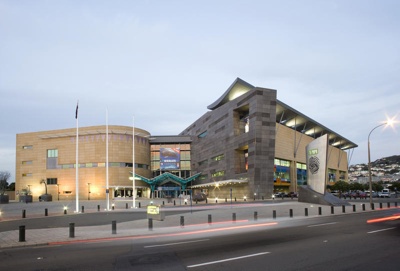Mrs William Strang no.3
Shared by Museum of New Zealand Te Papa Tongarewa
A virtuoso of portraits and scenes of the working class with a sharp eye for depicting the truth of his subjects, William Strang (1859-1921) was a revered draughtsman and painter. However, his most lucrative and productive mode of creation was printmaking, an integral part of his career throughout his lifetime. Critics such as Maurice Harold Grant noted Strang as a printmaker who was ‘keenly observant’ in all stages required of printmaking, particularly in his ability to transfer his immaculately drawn line into an equally impressive bitten plate. Born in Dumbarton, Scotland in 1859 to working-class parents, Strang moved to London in 1875 at the age of 16. The following year he enrolled at the Slade School of Art, where he studied under the French Realist, Alphonse Legros. Strang excelled particularly in Legros’ recently introduced etching class, serving as Assistant Master in the class for two years after graduating. Strang’s style was heavily influenced by Legros; both artists having working-class backgrounds, leading to a strong undercurrent of social justice in many of Strang’s works. Early in his career Strang made many etchings of working class life in a realist manner, as well as works of allegory and delightfully macabre fantasy. An increase in requests for commissions after the mid-1890s meant that Strang focused more on portraiture and painting. However, he still continued to work as a printmaker throughout his career – becoming President of the International Society of Sculptors, Painters and Gravers in 1918. A month before his death in 1921, Strang was elected an Engraver Member of the Royal Academy. Strang is perhaps best known for his etchings of famous artistic and literary sitters such as the art historian and curator Campbell Dodgson (Te Papa 1968-0001-43) and author Rudyard Kipling (Te Papa 1956-0001-17). While many of his portraits were commissioned, Strang’s artistic preoccupations did not lie with capturing the ‘beauty’ of the sitter. Instead he picks out the most human traits of the individual, highlighting their idiosyncracies and favouring honesty and psychological intensity over glamour and handsomeness. This relatively early etching presents an unembellished account of Strang’s young family, his wife Agnes and their three sons, Ian, David and Peter. A rabbit (which emerged as a favourite household pet during the Victorian era) captivates all the children while Agnes – Strang’s wife – keeps a protective eye over them as she holds the youngest. Keeping in line with his socialist foundations, Strang does little to embellish the scene; the ground around them is bare, while the brick of the building behind them looks worn, creating a simple and believable depiction of humble Victorian life. Spots and blemishes are spread across this later state of the work, which speaks of the damaged condition of the plate at the time of printing. Yet the blemishes do not detract from what we see; blending into the different tones of the mezzotint, they look more like an intended feature of the work than an eyesore. Sources: Laurence Binyon, William Strang; Catalogue of his Etched Work (Glasgow: James MacLehose and Sons, 1906), pp. vii-xvii. Maurice Harold Grant, A Dictionary of British Etchers (London: Rockliff, 1953), pp. 196-97 National Galleries Scotland: https://www.nationalgalleries.org/art-and-artists/artists/william-strang Wikipedia: https://en.wikipedia.org/wiki/William_Strang Dr Mark Stocker Curator, Historical International Art February 2018
Ngā whakamārama
Details
-
Title
Mrs William Strang no.3
-
Maker
William Strang
-
Date made
1889
-
Subject
paper, ink, prints, etchings, works on paper, etching, mezzotint, British, United Kingdom, Sir John Ilott
-
Rights
No Known Copyright Restrictions
-
View source record for this item
Kei hea tēnei taonga?
Where is this item held?
-
Additional information including high resolution images may be available.
-
Location
Cable Street, Wellington
-
Website

Whare taonga | Organisation
Museum of New Zealand Te Papa Tongarewa
Ngā here ki runga i ngā whakaahua o tēnei taonga?
What can you do with images of this item?
-
You must check with Museum of New Zealand Te Papa Tongarewa to confirm terms of use and any attribution requirements, but this is our understanding:
-
Use for private study, research, criticism, review, or education
NZ Copyright law allows for the use of copyrighted works in specific circumstances. Consider what you can do under copyright law.
-
Share
You can share this image without further permission.
-
Modify or remix
You can modify, remix or add to this image without further permission.
-
Commercial use
You can use this image to make money.
-
Text adapted with permission from Te Papa and Digital NZ
Tāpirihia he kōrero anō
Improve this record
-
Can you help us? Share names, details and stories to help enrich the collection.